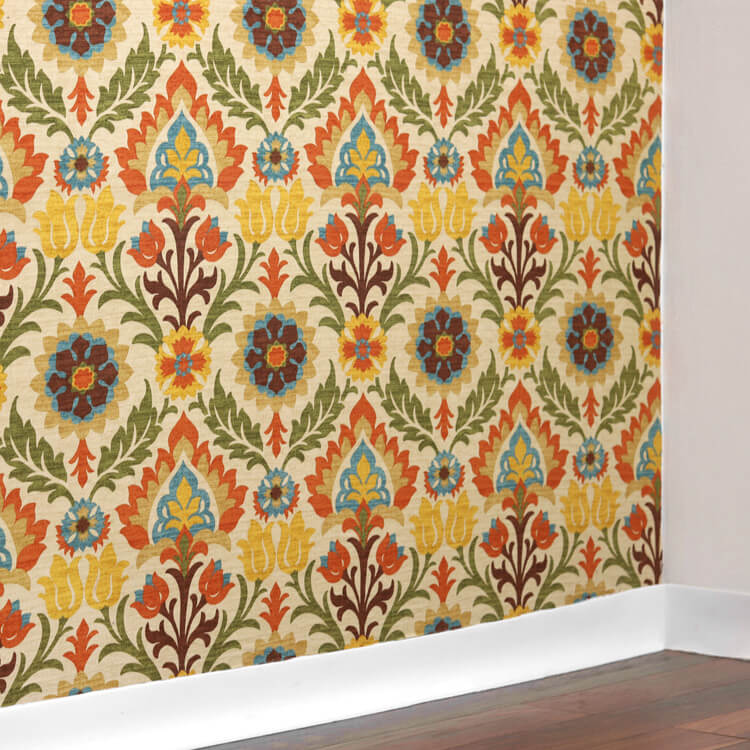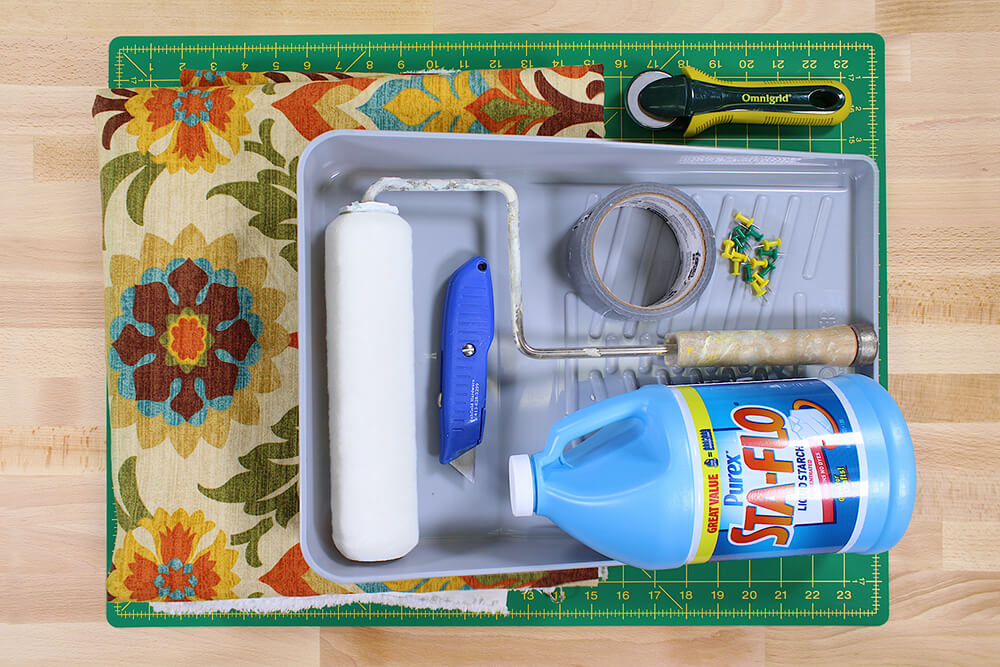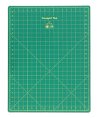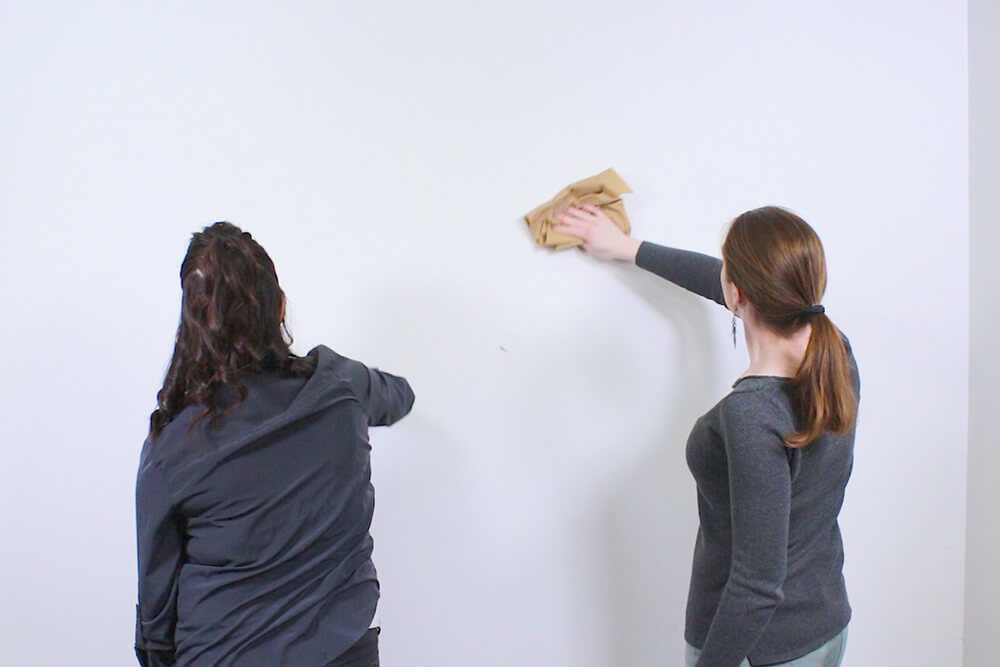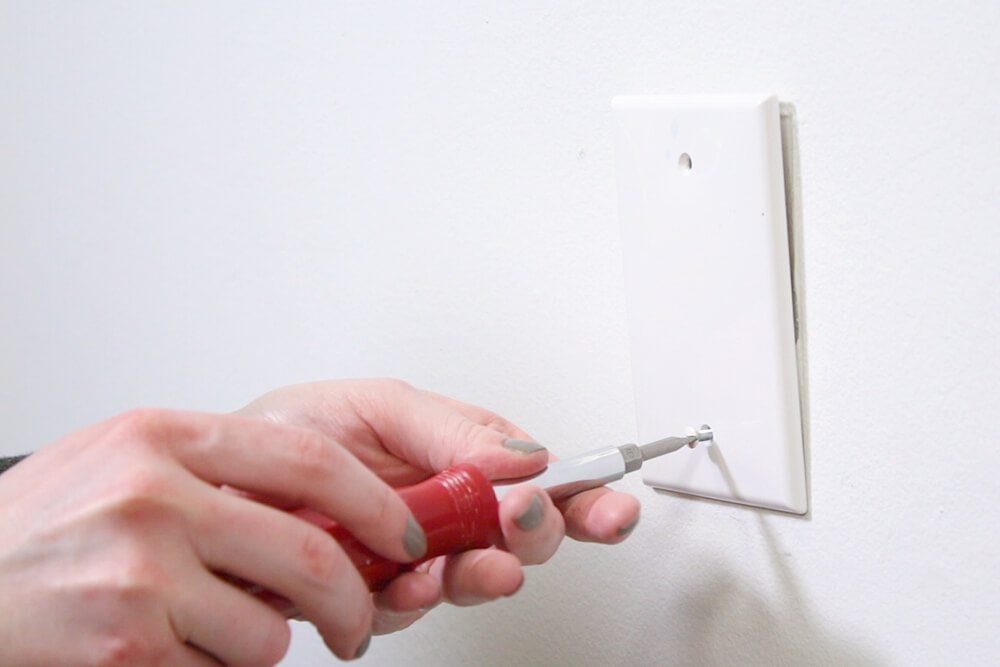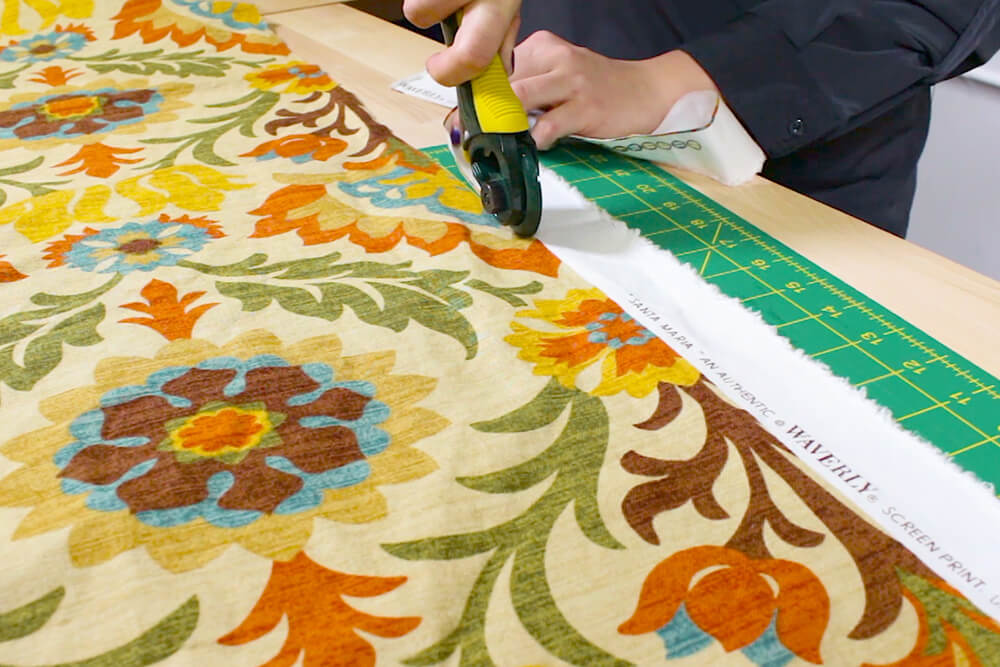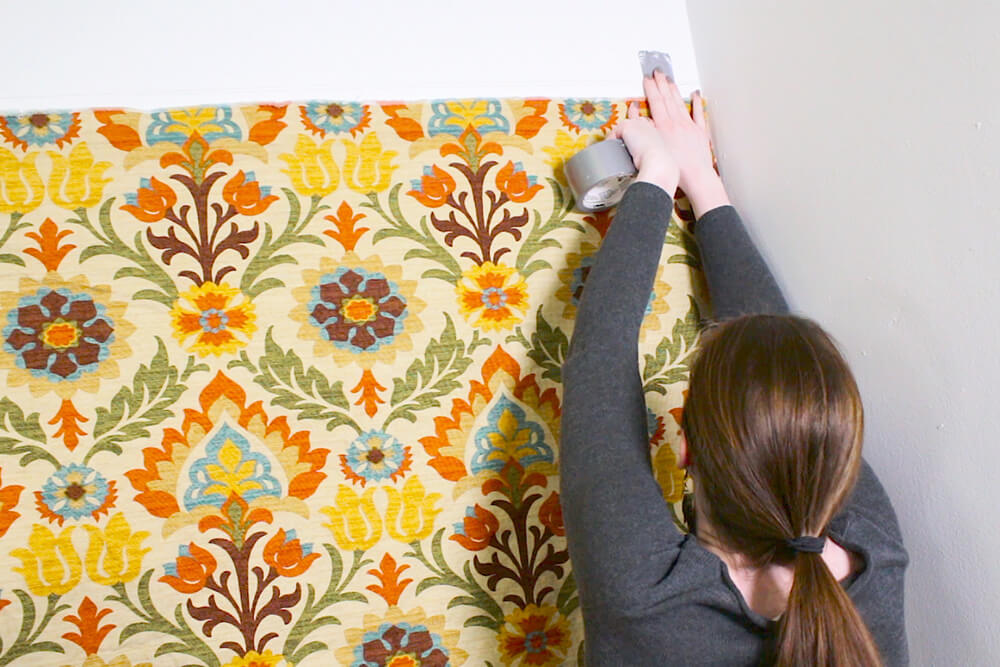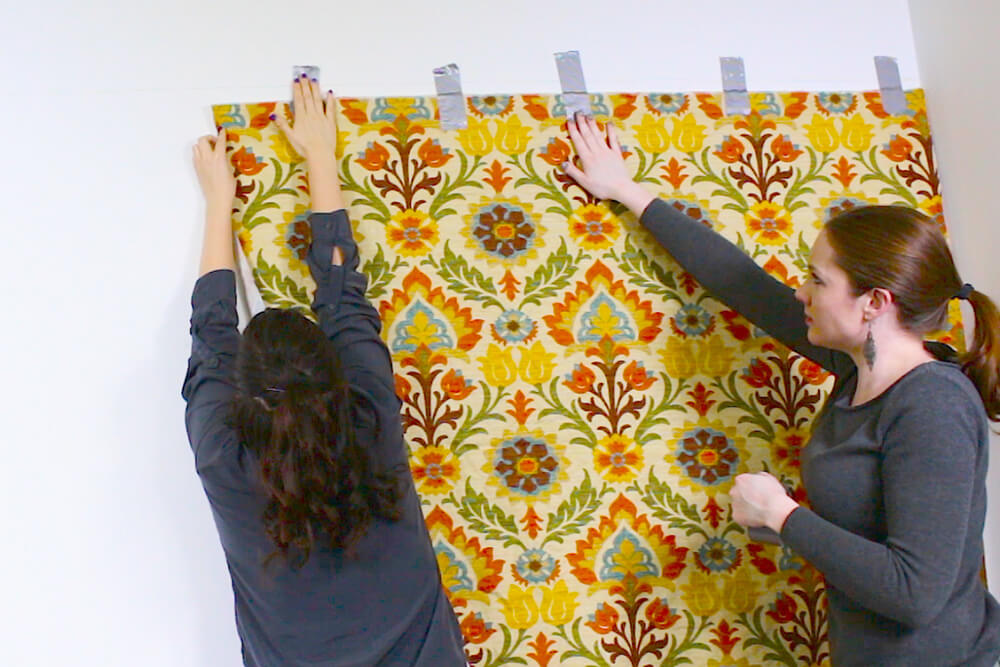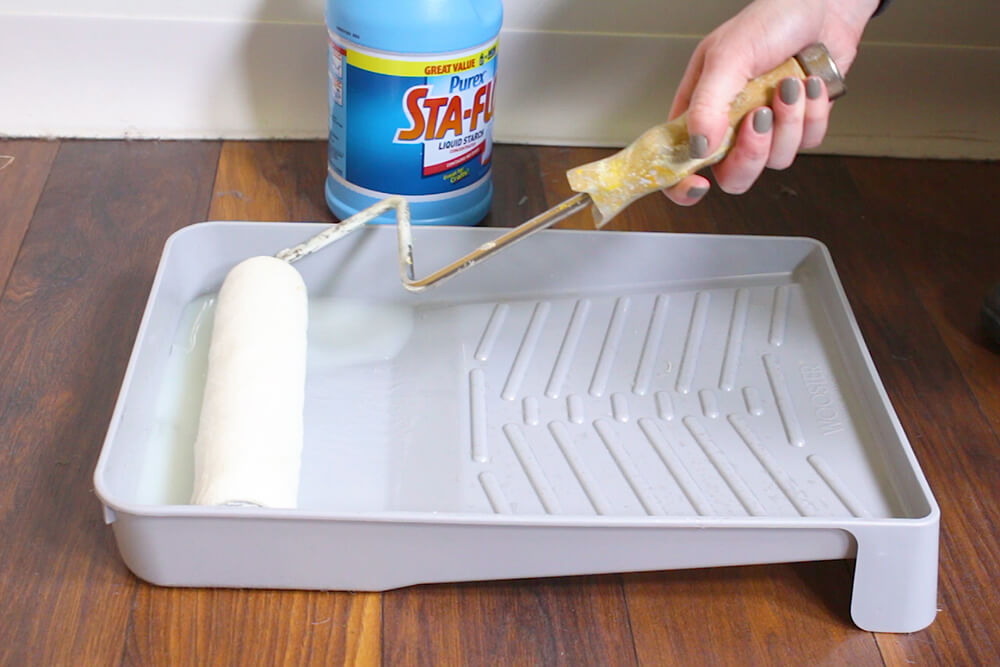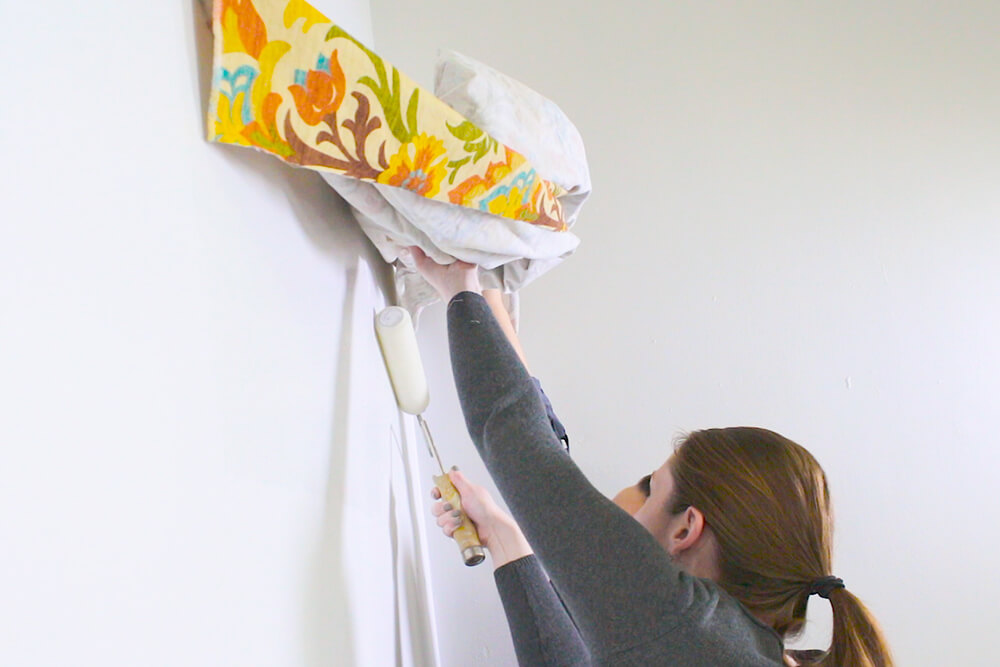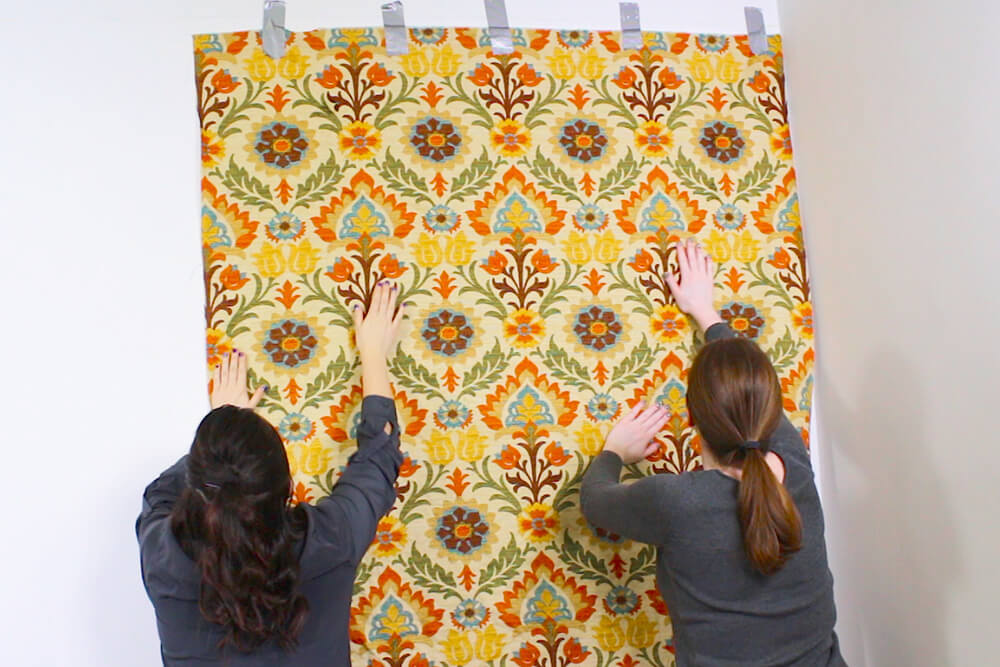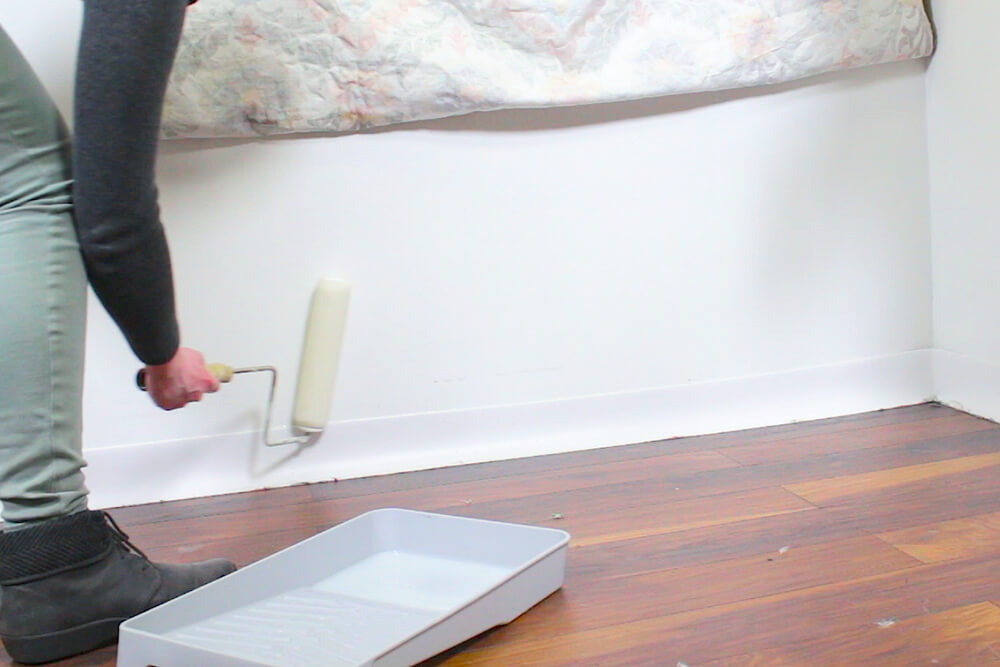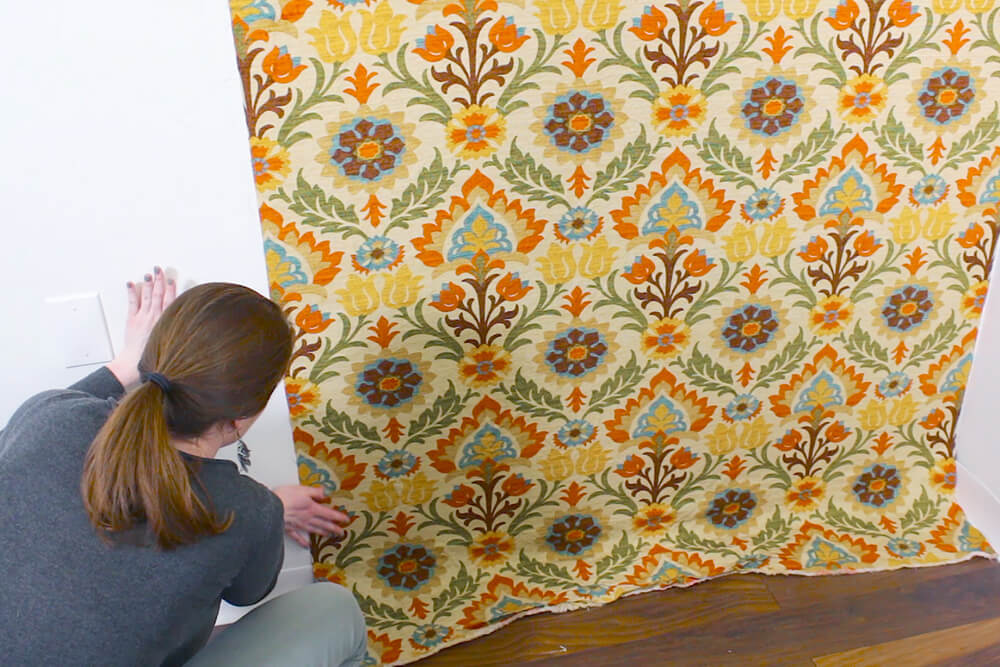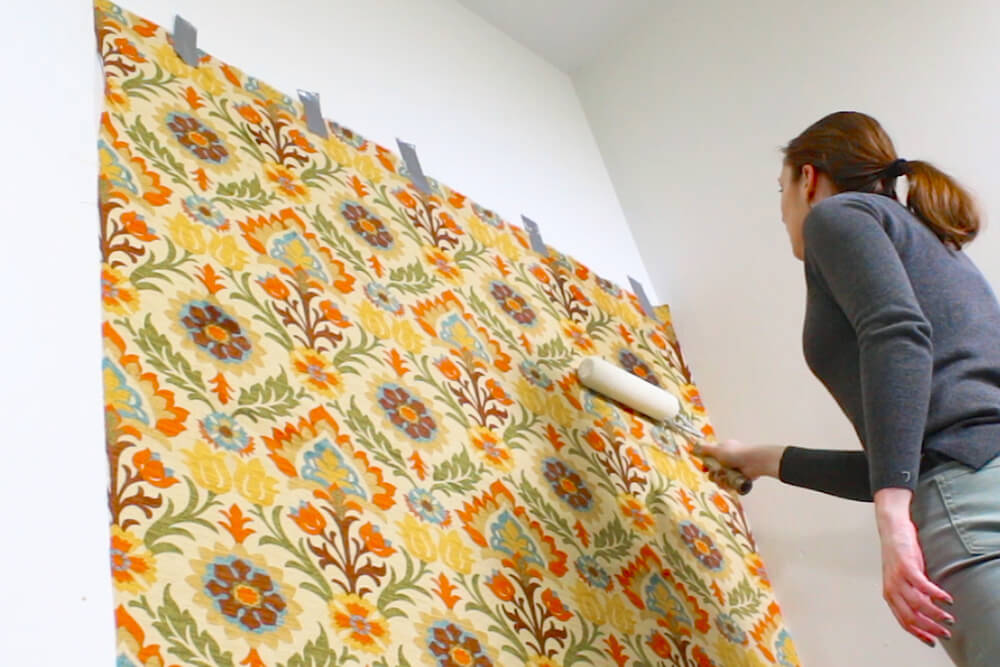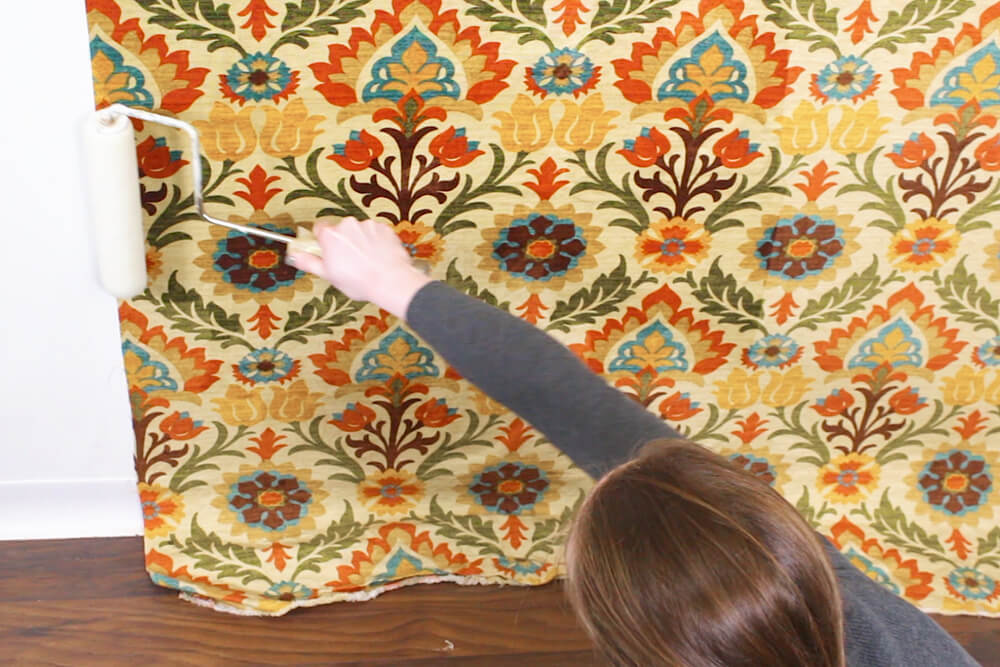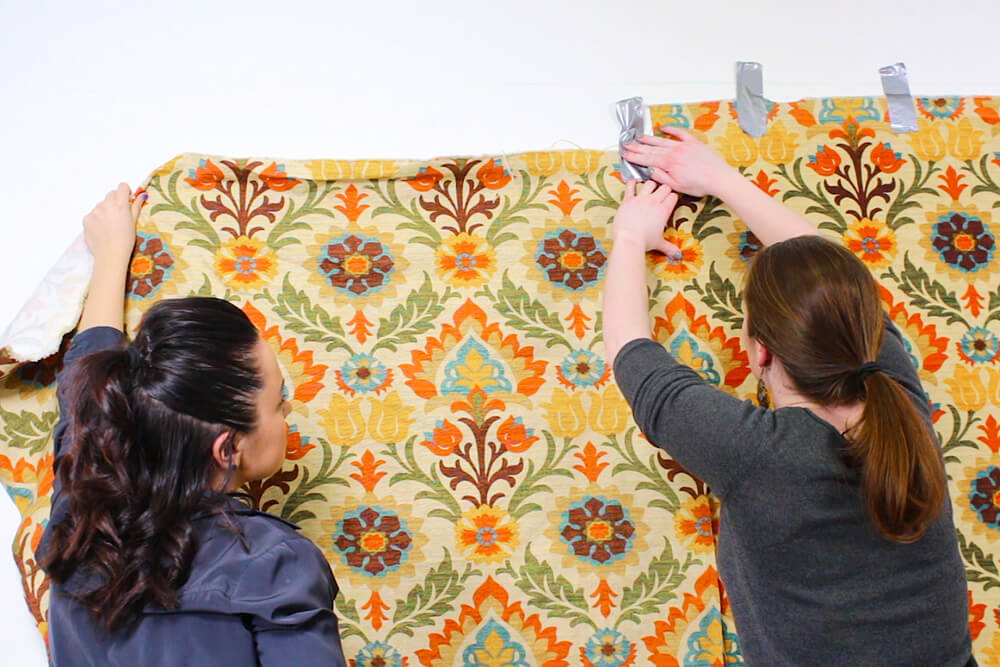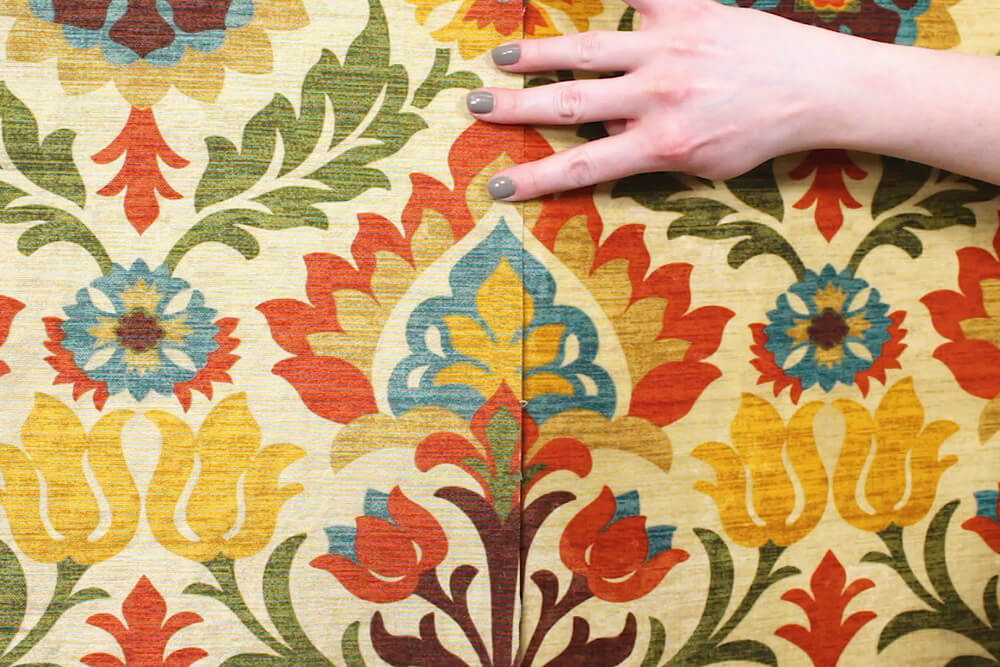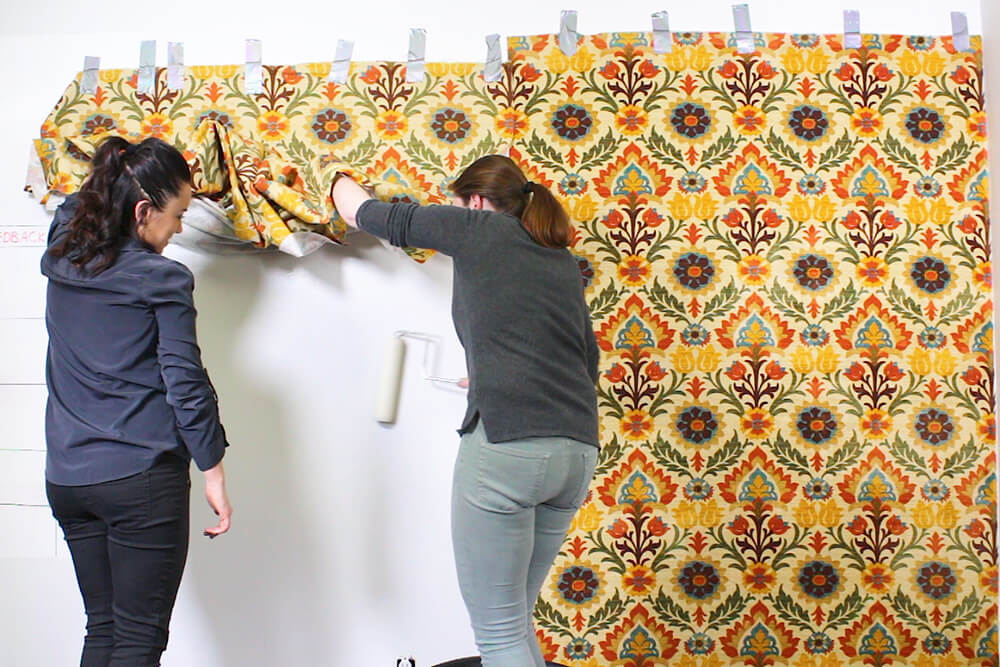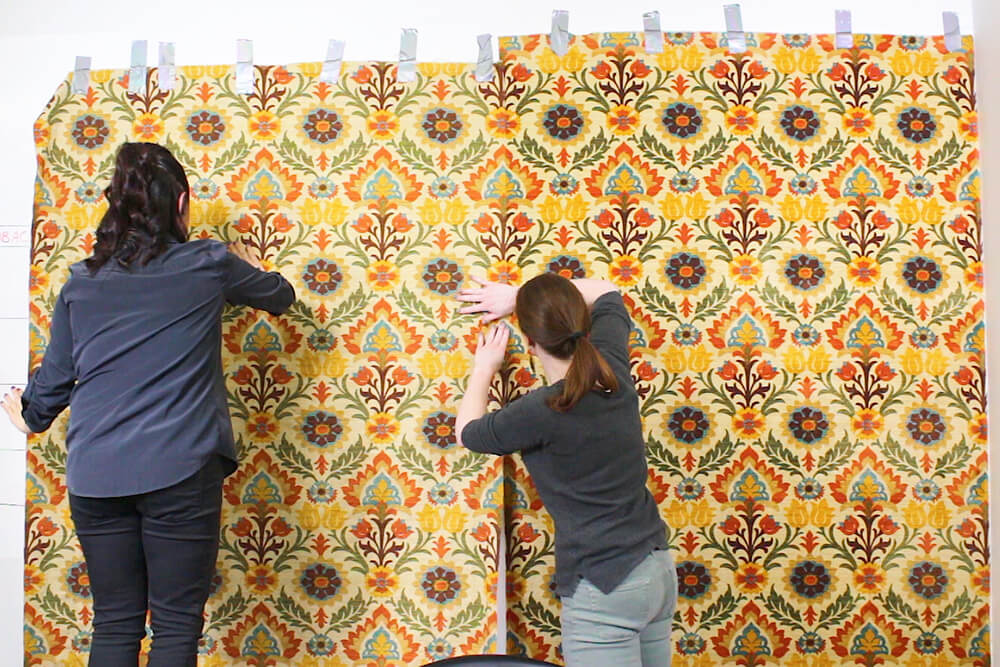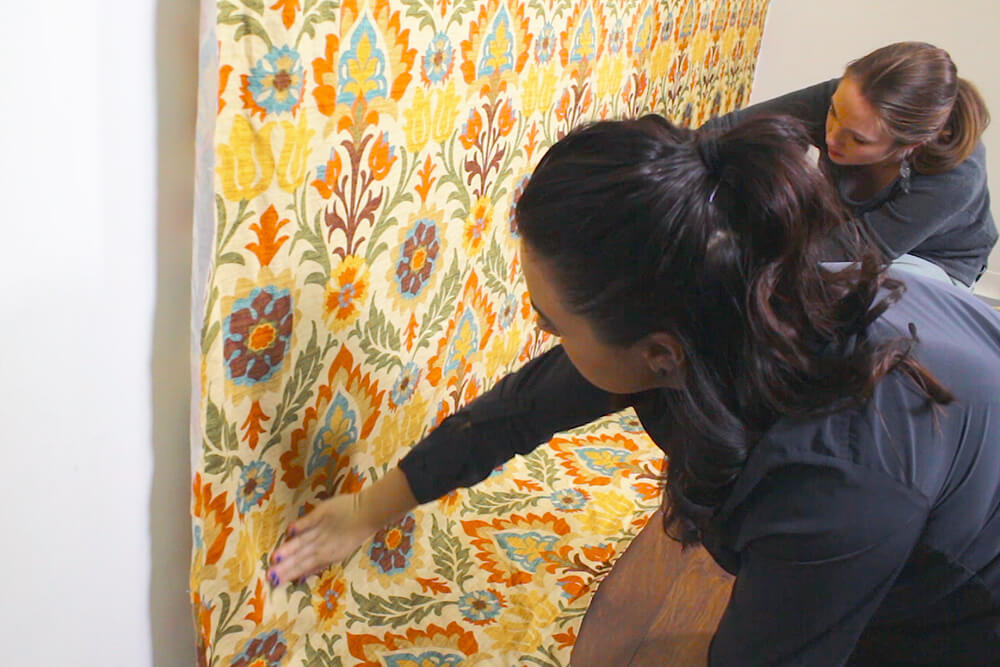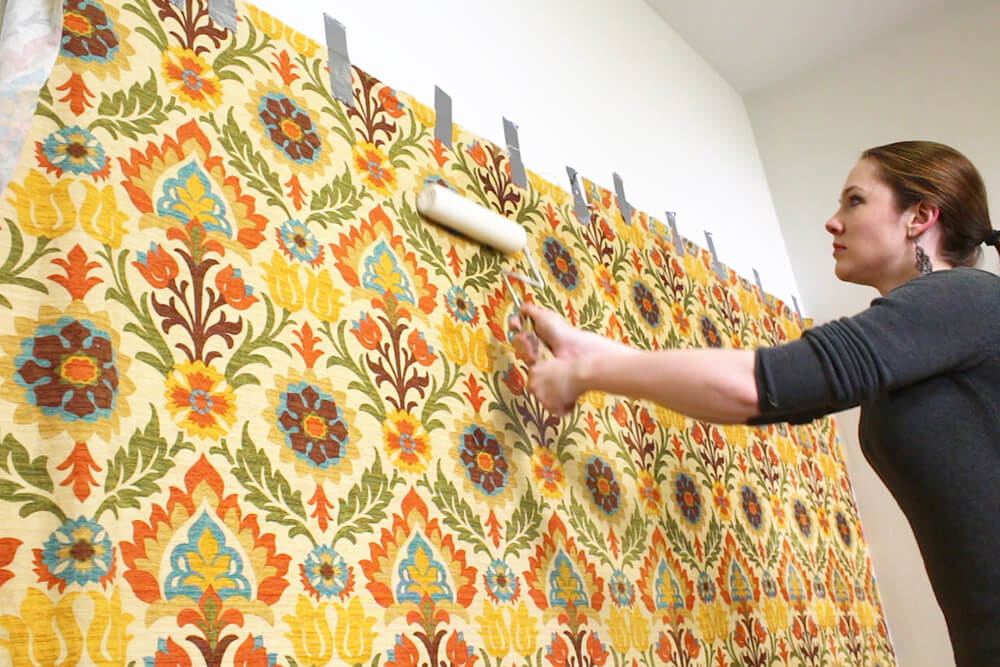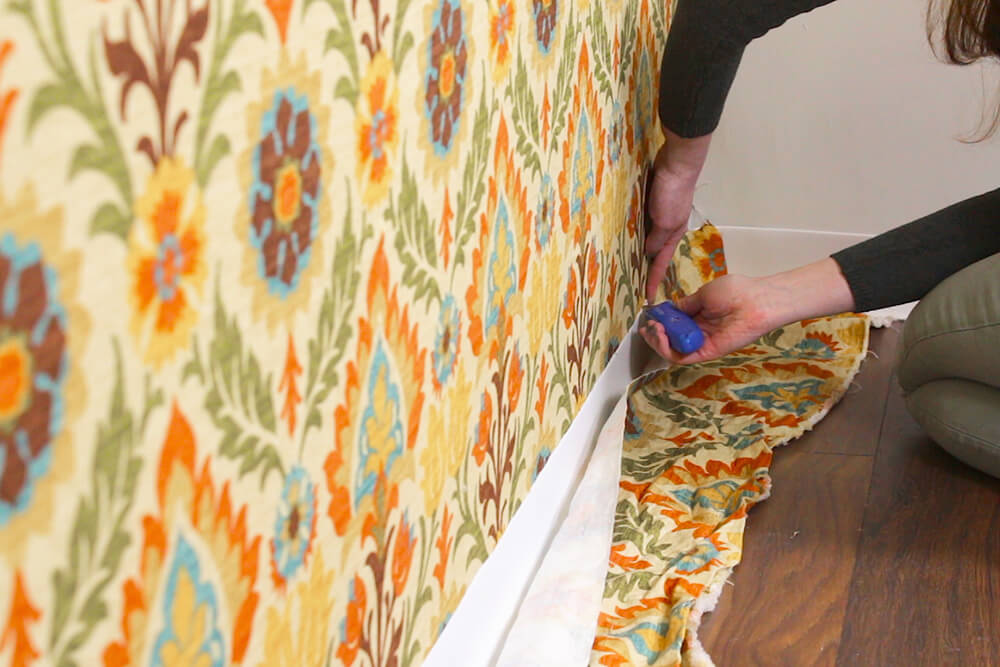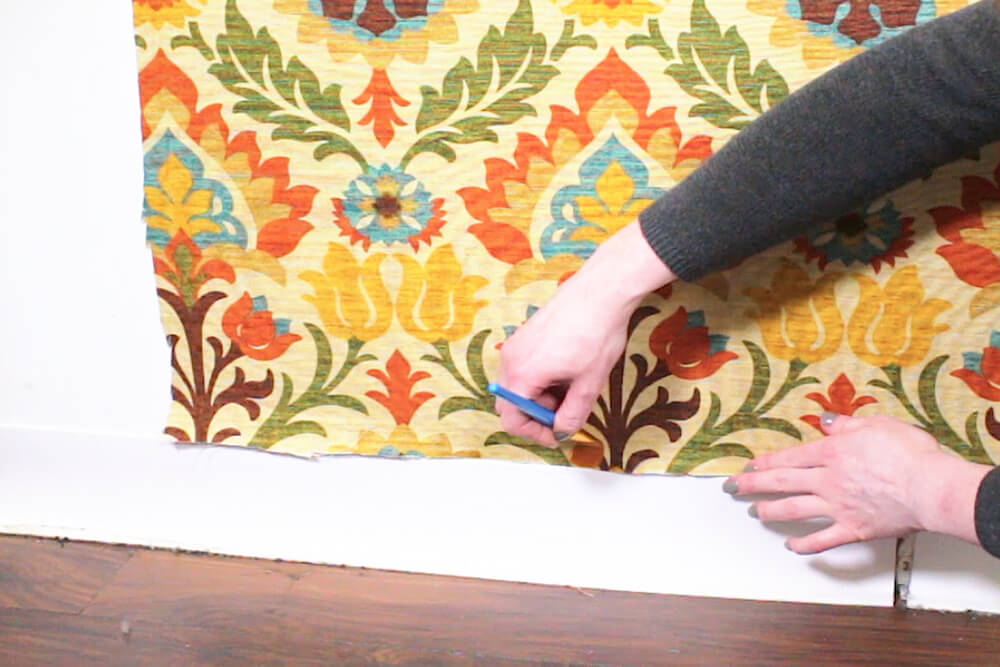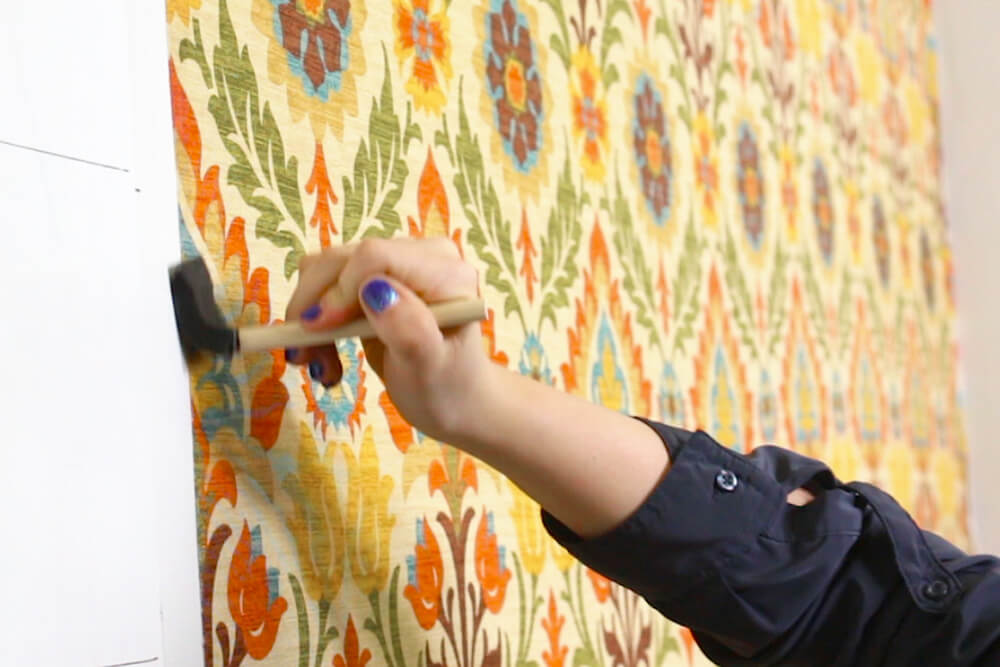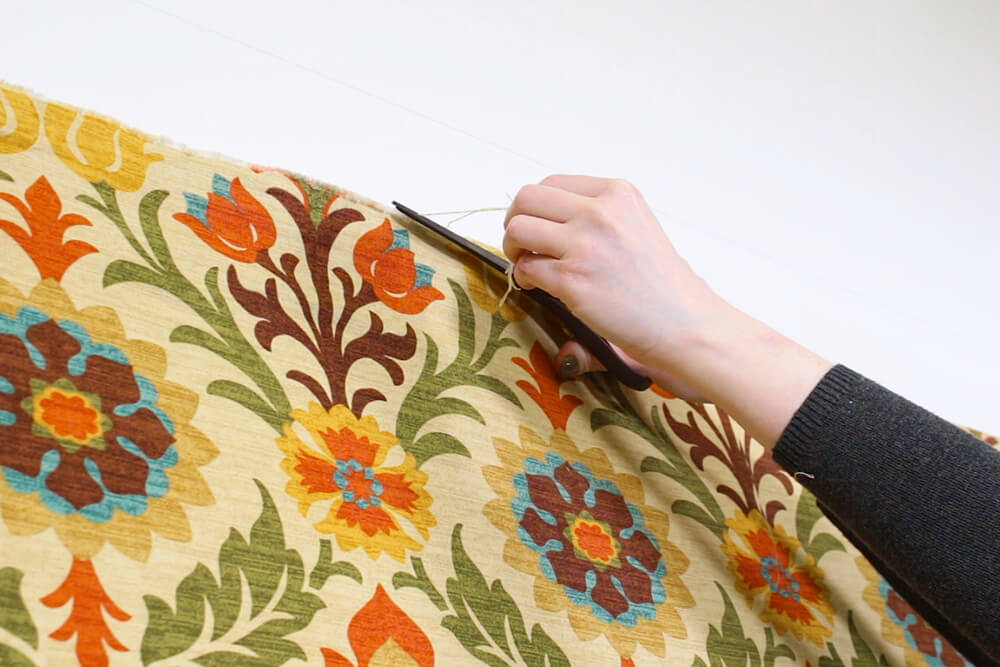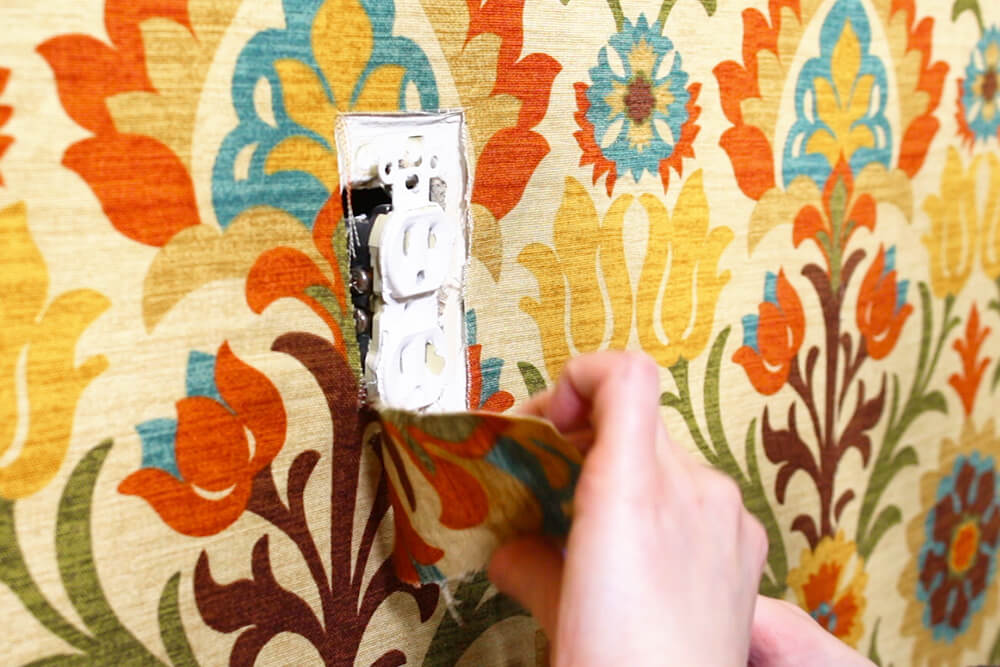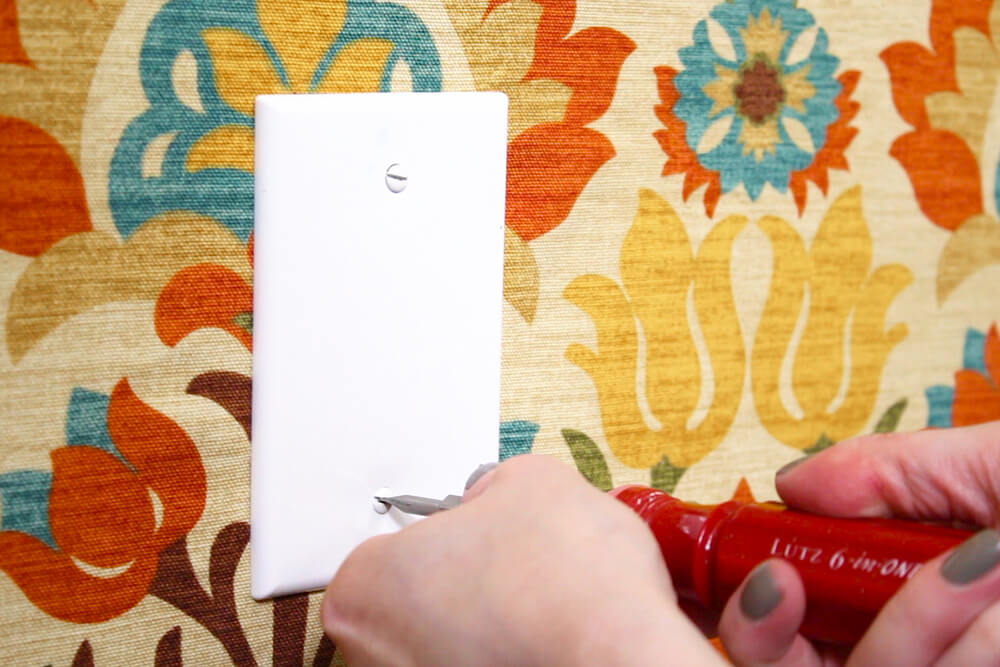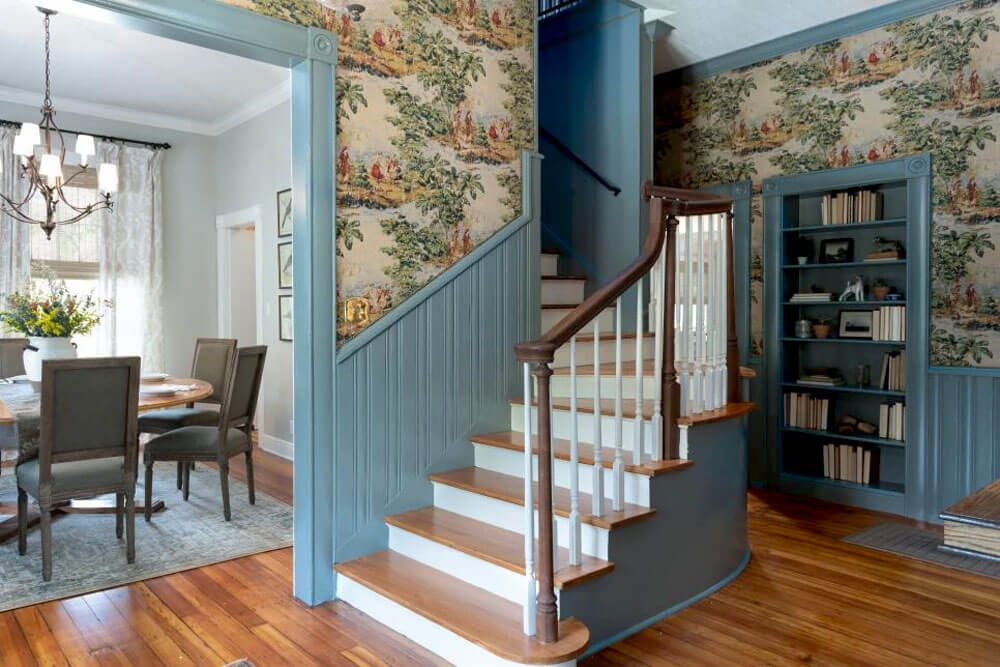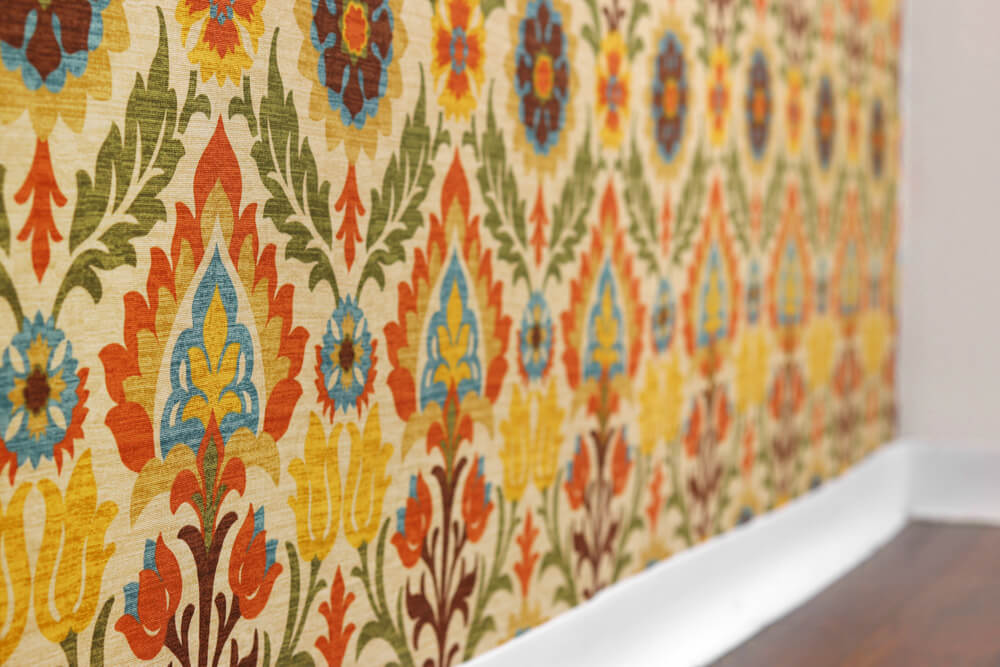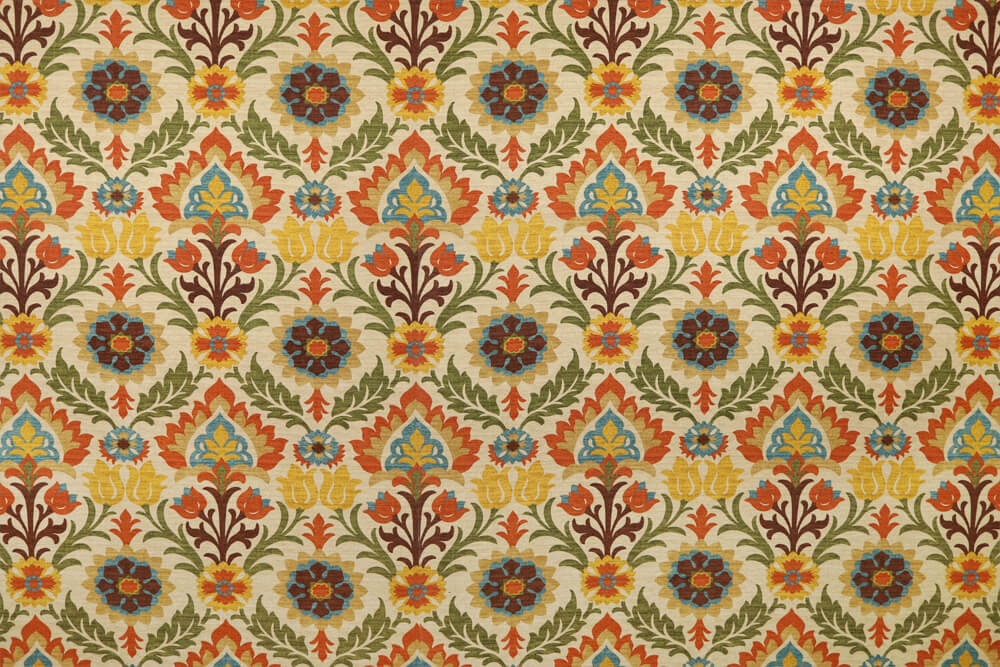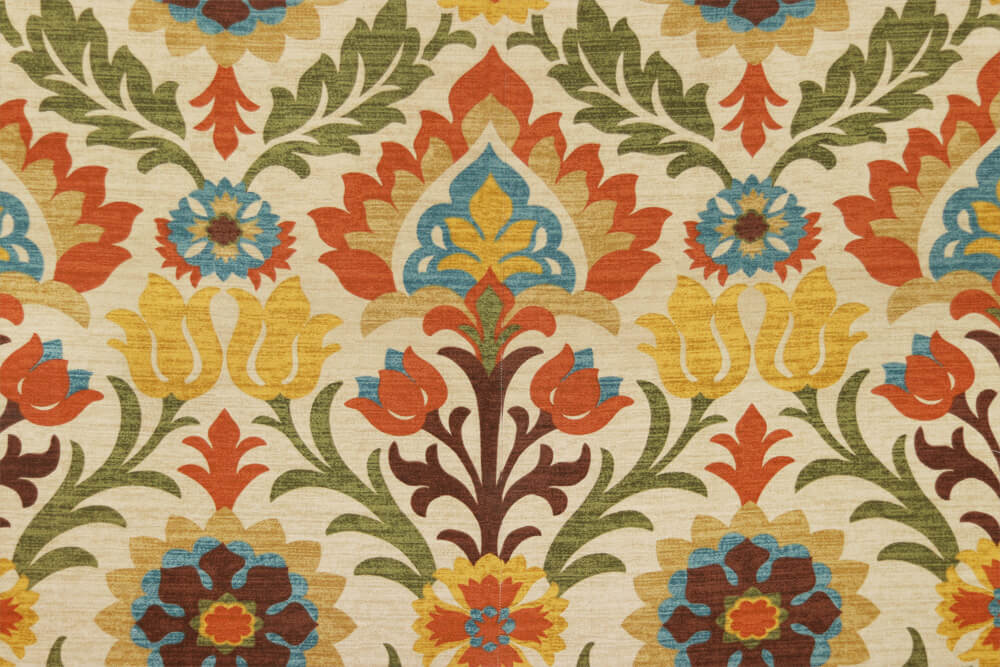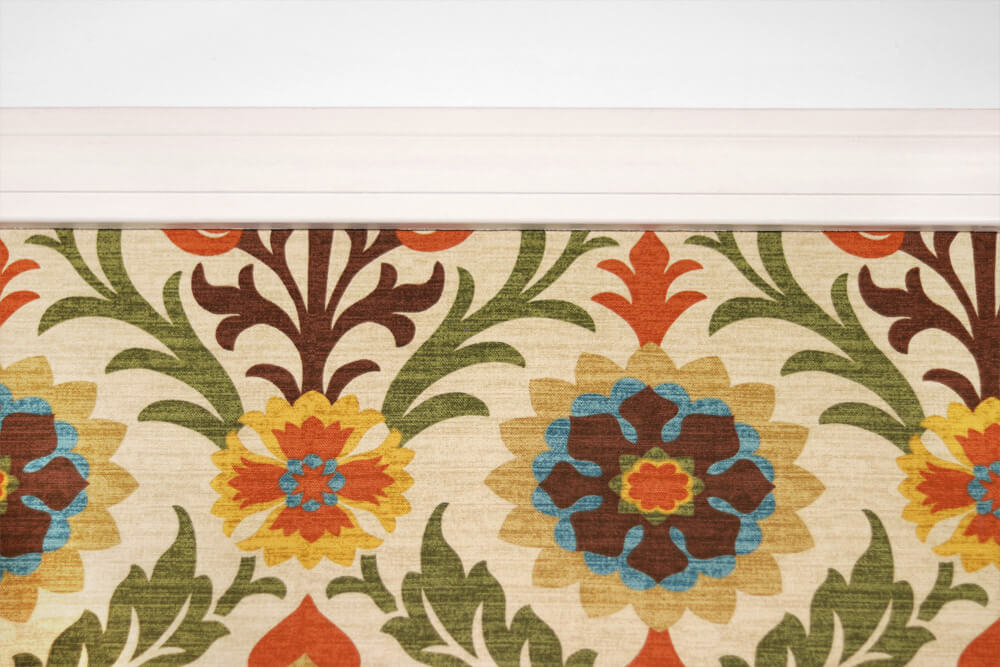How to Make Fabric Wallpaper
- By Clara and Jen
- Beginner
If you like the look of a wallpaper feature wall, but you’re renting or are afraid of commitment, fabric wallpaper is the way to go. It’s easy to apply to the wall using liquid starch, and it’s also easy to peel off when you’re ready to take it down.
Light to medium weight cotton fabrics work well, like quilting fabric or drapery fabric. Other natural fibers like linen or linen blends can also be used. Polyester and other synthetic materials may not adhere as well and should be tested before doing a whole wall.
If you’ve ever tried to remove wallpaper before, you may have a strong aversion to wallpaper, but the great thing about fabric wallpaper is it’s easy to remove without damaging the wall. To remove the fabric wallpaper, apply warm water with a sponge or spray bottle and peel off the fabric. Then clean the remaining starch from the wall. You can even throw the fabric in the wash and reuse it. Check out our video on removing fabric wallpaper to see just how easy it is!
P.S. We also now carry the real thing. Find our wallpaper here. If you like how easy this project is, we think you’ll also love our peel and stick wallpaper!
Materials
- Drapery fabric
- Or quilting fabric
- Liquid starch
- Paint roller and tray
- Tacks or tape
- Utility knife
- Rotary cutter or scissors
Video
Instructions
How much fabric do you need?
Measure the width of the wall in inches. Divide by the width of the fabric. Round up to the nearest whole number. This is the number of panels you’ll need.
Measure the height of your ceiling in inches (or however tall you want the wallpaper). Divide by 12, then divide by 3 to calculate the yards per panel. Multiply by the number of panels.
This is the total yardage you’ll need, but depending on the size of the repeat of the pattern, you will probably want to add another yard or so.
How Much Starch?
We covered about 64 square feet with a medium weight drapery fabric and used a full 2 quart jug of liquid starch. Lighter weight fabric will absorb less.
Step 1: Prepare the wall and fabric
Prewash the fabric to remove any finishes and prevent the dye from bleeding onto the wall.
Clean the wall to ensure best adhesion. Fabric wallpaper works best on smooth or very lightly textured walls. Take off any electrical covers.
Cut off the selvages. Use a rotary cutter for the straightest edges.
Cut the first piece of fabric several inches longer than the height of the wall. We suggest waiting to cut the rest of the pieces so you can match up the pattern later.
Step 2: Apply the fabric to the walls
Tack or tape the fabric where you want it, leaving a little extra at the top. We’re going to put molding over the top, but if you have existing molding, you’ll be cutting off the extra at the end.
Pour the liquid starch into the paint tray and saturate the roller.
Starting at the top, roll the starch onto the wall. It really helps to have two people for this step.
Step 3: Finish the edges
When the fabric is dry, use a utility knife to carefully cut off the extra fabric where it meets any moldings or baseboards.
Touch up the edges with starch and a brush. Trim any loose strings at the edges and seams.
If there are any electrical outlets, mark around the edges, cut out the piece, and put the cover back on.
Add trim if needed.
And that’s it, you now have a striking feature wall that you can easily remove!
We spotted fabric wallpaper on an episode of HGTV’s Home Town! We don’t know how exactly it was applied since it was an “original” feature of the house which they kept, but it could definitely be done with starch. And the fabric was very familiar… You can find the toile fabric, Covington Bosporus Billard, on our site if you want to recreate this look!
Looking for actual wallpaper? We have that too!

